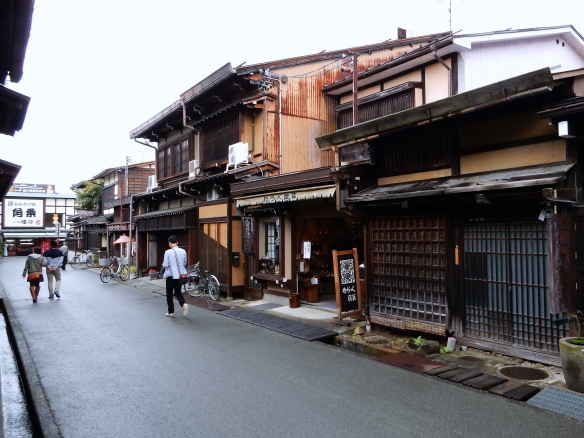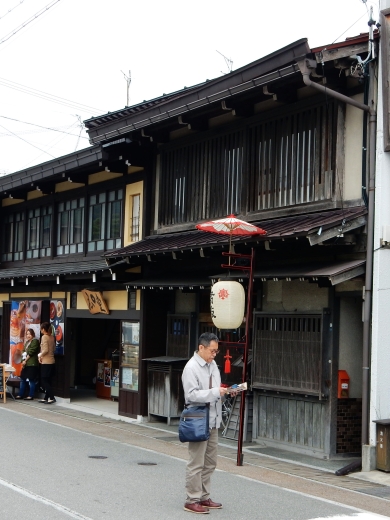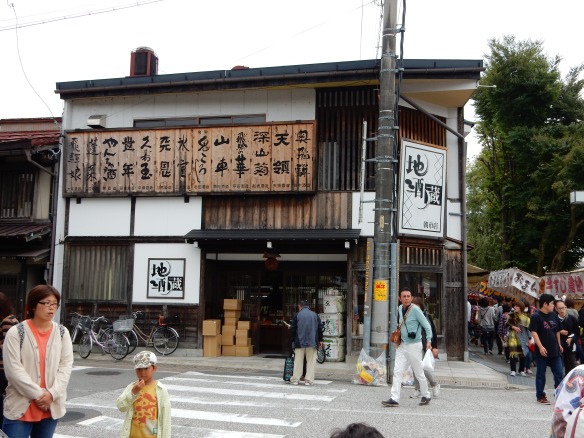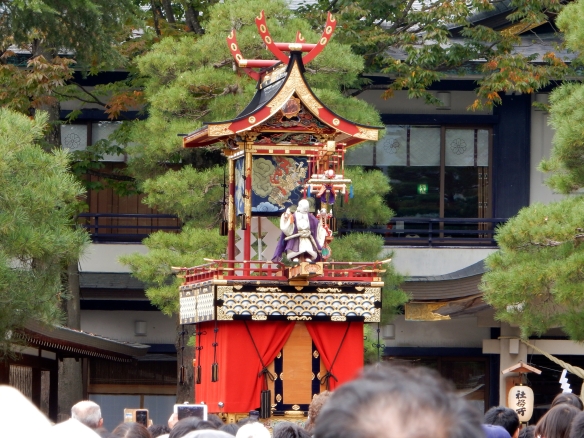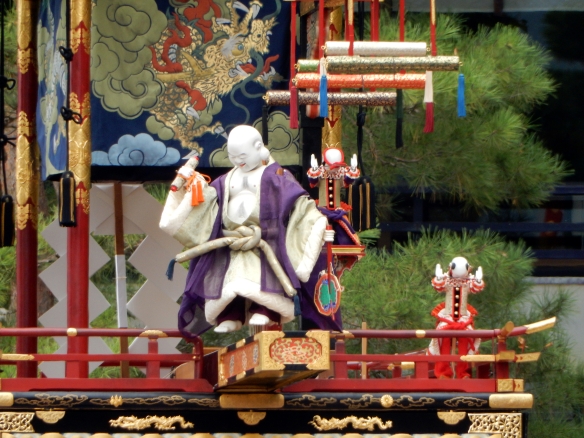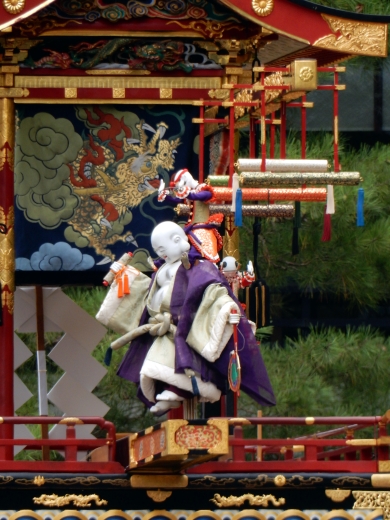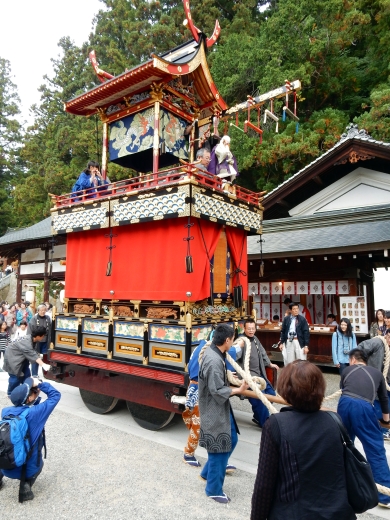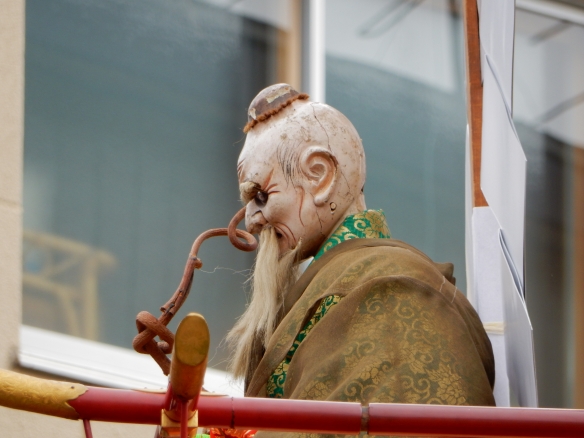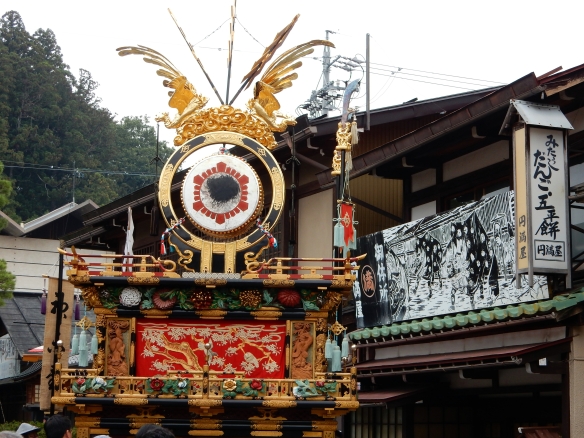During the long weekend we went up to Hida Takayama in Gifu north of Nagoya for the Autumn festival. The Takayama festival is considered the third most beautiful festival in Japan and started in the 16th Century. There are two festivals during the year which were originally harvest festivals. There is a Spring festival known as the Sanno Festival and the Autumn festival on 9th and 10th October. Both festivals feature huge beautifully decorated floats which are pulled through the town and displayed at a shrine where they have a puppet show. There is also a parade through the town of locals in period costume.
This is the Hida River which runs alongside the train. It is featured in a kabuki play called Musume Dojo-ji:
The play tells the story of a maiden, Kiyo-hime, who falls in love with Anchin, a celibate monk living at the Buddhist temple of Dojo-ji on the Kii Peninsula. Unable to control her intense longing for her love, she takes the form of a serpent in order to cross the flooded Hida River. Crossing it, she reverts to her human form. A ceremony is taking place at the monastery to consecrate a temple bell, and she goes to attend it. Kiyo-hime spots the monks and pursues him. The monk hides under the bell placed on the ground. Angered and frustrated at being shunned, Kiyo-hime turns herself into a serpent and coils around the bell until it heats so much that the monk is incinerated. (Wikipedia)

Here is the river through the centre of Takayama, lined with the usual stalls you find at Japanese festivals (although these ones featured the local specialty of Hida beef – a welcome addition):

The giant torii looking up towards Sakurayama Hachiman Shrine which is where the puppet show is centred:

Zooming in on one of the festival floats with the new camera:

The floats are displayed on the street leading up to the shrine:
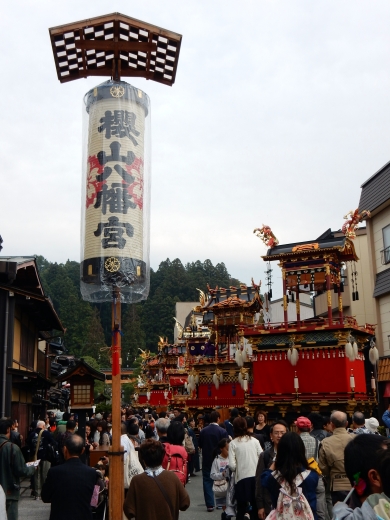
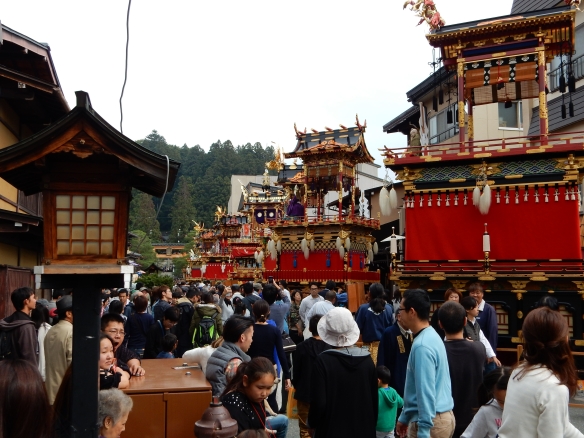

Floats with the main entrance to the shrine which dates back to the time of the Emperor Nintoku (413 – 439):






